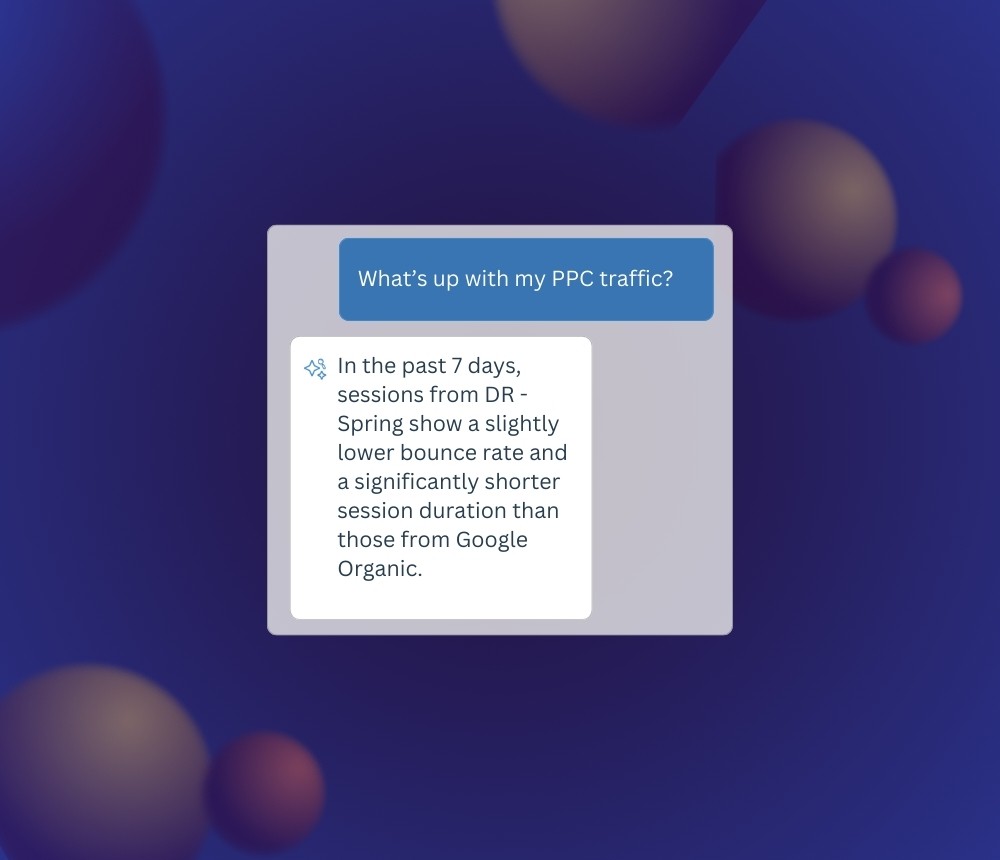Use Competitor Analysis to Boost Sales

In today's competitive business landscape, small businesses must stay ahead of their competitors.
Being a small business owner, you can easily do it by continuously evaluating your competitors' strategies and offerings. Additionally, conducting a thorough competitor analysis helps your small businesses gain valuable insights into the competitors' strengths, weaknesses, opportunities, and threats.
This information can refine your business strategies, enhance your products or services, and boost sales.
This article will explore the benefits of conducting a competitor analysis and provide practical tips on how small businesses can use different tips to get a competitive edge and increase sales. So, let's dive into the details!
What is competitor analysis?
Competitor analysis identifies and evaluates competing businesses' strengths and weaknesses within a given industry.
The analysis can help a company understand its market position, identify potential opportunities and threats, and develop strategies to gain a competitive advantage.
For example, suppose you are starting a new t-shirt printing shop. In that case, you might conduct a competitor analysis to determine the number of other t-shirt printing shops in your area, their prices, and their marketing strategies.
You will also identify their strengths and weaknesses and the unique features they offer. Additionally, you can evaluate these competitors' customer feedback and ratings to understand where they lack and how you can fill the gap.
Based on this analysis, you can make a strategy to differentiate your t-shirt printing shop from others.
For instance, you can leverage customers by providing a "make your own shirt" option or offer a more extensive customized design variety.
How Competitor Analysis Can Impact Your Sales?
Let's discuss how effective competitor analysis helps you and impact your overall sales!
It helps Find Market Gaps
One way competitor analysis can boost sales is by helping you identify market gaps. By analyzing your competitors, you can see where they are succeeding and falling short. This information can be utilized to determine areas where there is unmet demand or a lack of competition. After identifying these gaps, you can create products or services that meet your customers' needs and differentiate yourself from your competitors.
For example, if your competitors are all focused on the same customer demographic, you may be able to find success by targeting a different group. Alternatively, you may be able to offer a unique feature or service that none of your competitors are providing. Also, finding market gaps differentiate you from your competitors and help you gain a competitive advantage.
Helps Avoid Mistakes
Another way competitor analysis can impact your sales is by helping you avoid mistakes. By analyzing your competitors, you can see where they have struggled and learn from their mistakes. This can help you avoid making the same mistakes and increase your chances of success.
For example, if a competitor launched a product that failed because of poor marketing, you can learn from their mistake and adjust your marketing strategy accordingly.
Alternatively, if a competitor struggles because of a lack of innovation, you can focus on developing new and innovative products to differentiate yourself.
Gives Ideas for Marketing Strategies
Lastly, competitor analysis can impact your sales by giving you ideas for marketing strategies.
When you carefully analyze your competitors' marketing efforts, you can see what works for them and what isn't. This information can be used to inform your own marketing strategies and improve your chances of success.
For example, if a competitor successfully advertises social media, you may want to invest in similar campaigns with beautifully edited pictures and branding.
Alternatively, if a competitor is struggling with their email marketing, you may want to focus on developing a more effective email marketing strategy.
Leverage More Customers
One of the most significant impacts of competitor analysis on sales is the ability to leverage more customers.
By thoroughly analyzing your competitors' customer base, you can identify gaps in the market and potential opportunities to attract new customers. You can identify the unique selling points of your competitors and use that information to create a more compelling value proposition for your product or service.
For example, suppose you find out that your competitor is offering a lower price point for a similar product.
In that case, you can adjust your pricing strategy to offer more value for money, attracting customers looking for a better deal. Additionally, you can identify gaps in the market that your competitors have overlooked, allowing you to create new products or services that cater to the market's needs.
Also, you can include an as-seen-on trust badge as a bonus method to increase website conversions and exposure. Building trust in customers is crucial when it comes to conversion rates and surpassing competitors.
Advancement in Closing Techniques
Another impact of competitor analysis on sales is the advancement in closing techniques.
According to Lead Squared, around 36% of salespeople say that closing is the hardest part of a sales procedure. However, analyzing your competitors can help you excel in your closing techniques. When you study your competitors' sales processes, you can identify areas where you can improve your sales process.
You can learn from your competitors' best practices and incorporate them into your sales strategy, improving conversion rates and closing more deals.
For example, suppose your competitor offers a free trial period for their product. In that case, you can incorporate a similar strategy into your sales process, giving potential customers a chance to test your product before committing to a purchase.
Additionally, if you find out that your competitor is using a particular sales technique that is highly effective, you can train your sales team to use the same technique, leading to increased sales.
How to do competitor analysis
Now that you know the benefits of competitor analysis, let's discuss different strategies that help you do it.
Know Who Your Competitors Are
The most important step in a competitor analysis is identifying your competitors. Your competitors can be direct or indirect, and it's important to consider both. Direct competitors are typically businesses that offer the same products or services as you.
In contrast, indirect competitors offer different products or services but still compete for the same target audience.
You can start by doing online research, looking at industry reports, and reviewing market data to identify your competitors.
Gather Information About Your Competitors
Once you have identified your competitors, the next step is to gather information about them. You can start by researching their websites, social media profiles, and marketing materials to learn about their products or services.
You can also look at reviews and customer feedback to understand their strengths and weaknesses.
Here is the information you can collect about them:
What are their products or services, and how do they differ from yours?
Their target customers: Who are they targeting, and how do they reach them?
Their pricing strategy: How do they price their products or services, and how does this compare to yours?
Their marketing strategy: What marketing channels do they use, and how effective are they?
Their strengths and weaknesses: What are their competitive advantages, and where do they fall short?
Try Out SWOT Analysis
After gathering information about your competitors, you can use a SWOT analysis to evaluate your competitors.
SWOT analysis evaluates the Strengths, Weaknesses, Opportunities, and Threats of an organization or a project. This analysis can help you identify areas where your competitors are excelling and where they are struggling, as well as areas where you may have a competitive advantage.
Additionally, it allows you to understand your competitors' strengths and weaknesses and helps you make informed decisions about how to differentiate your business and stay ahead of the competition.
Here is a brief overview of what each of the four components of SWOT analysis entails:
Strengths: These are the internal attributes or resources an organization possesses and can leverage to its advantage. Examples of strengths include a strong brand image, a talented workforce, unique product offerings, or efficient processes.
Weaknesses: These internal factors may hinder an organization's success. Weaknesses could include lacking resources, poor management, outdated technology, or inefficient processes.
Opportunities: These are external factors that an organization can leverage to its advantage. Opportunities could include new markets, partnerships, emerging trends, or technological advancements.
Threats: These are external factors that may pose a risk to the organization's success. Threats could include competitors, changing regulations, economic downturns, or natural disasters.
Find Your Advantages
You should be able to identify your competitive advantages based on the information you have gathered.
This could be based on factors such as your unique value proposition, pricing strategy, marketing channels, or customer service. You should also identify areas where you can improve to remain competitive.
Conclusion
Competitor analysis is an important tool for small businesses looking to boost their sales.
There are different ways small business owners can make better decisions about their business strategy and ultimately drive more sales.
These include identifying opportunities and gaps in the market, understanding their target audience better, identifying their own strengths and weaknesses, developing a more effective marketing strategy, and staying ahead of the competition.



